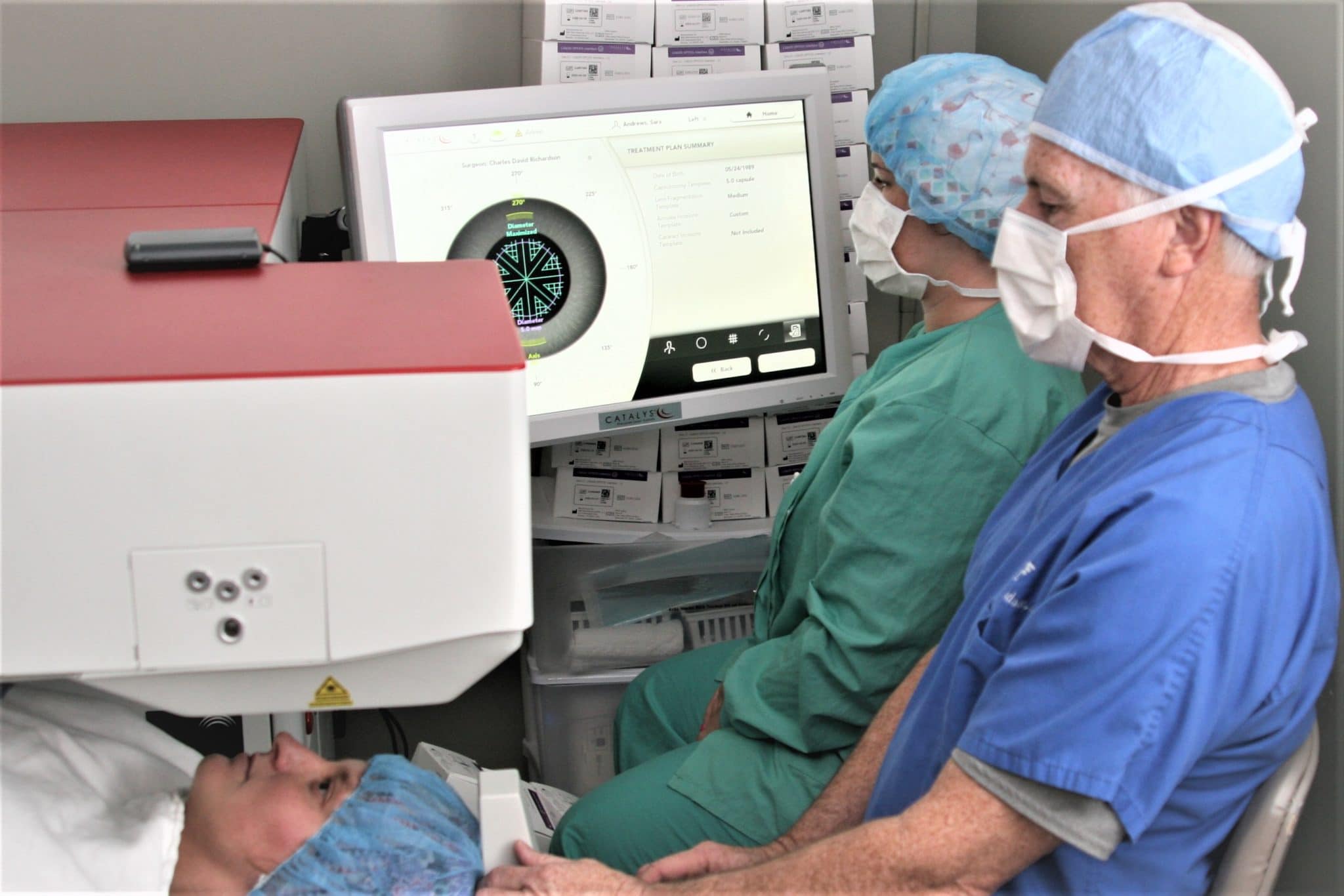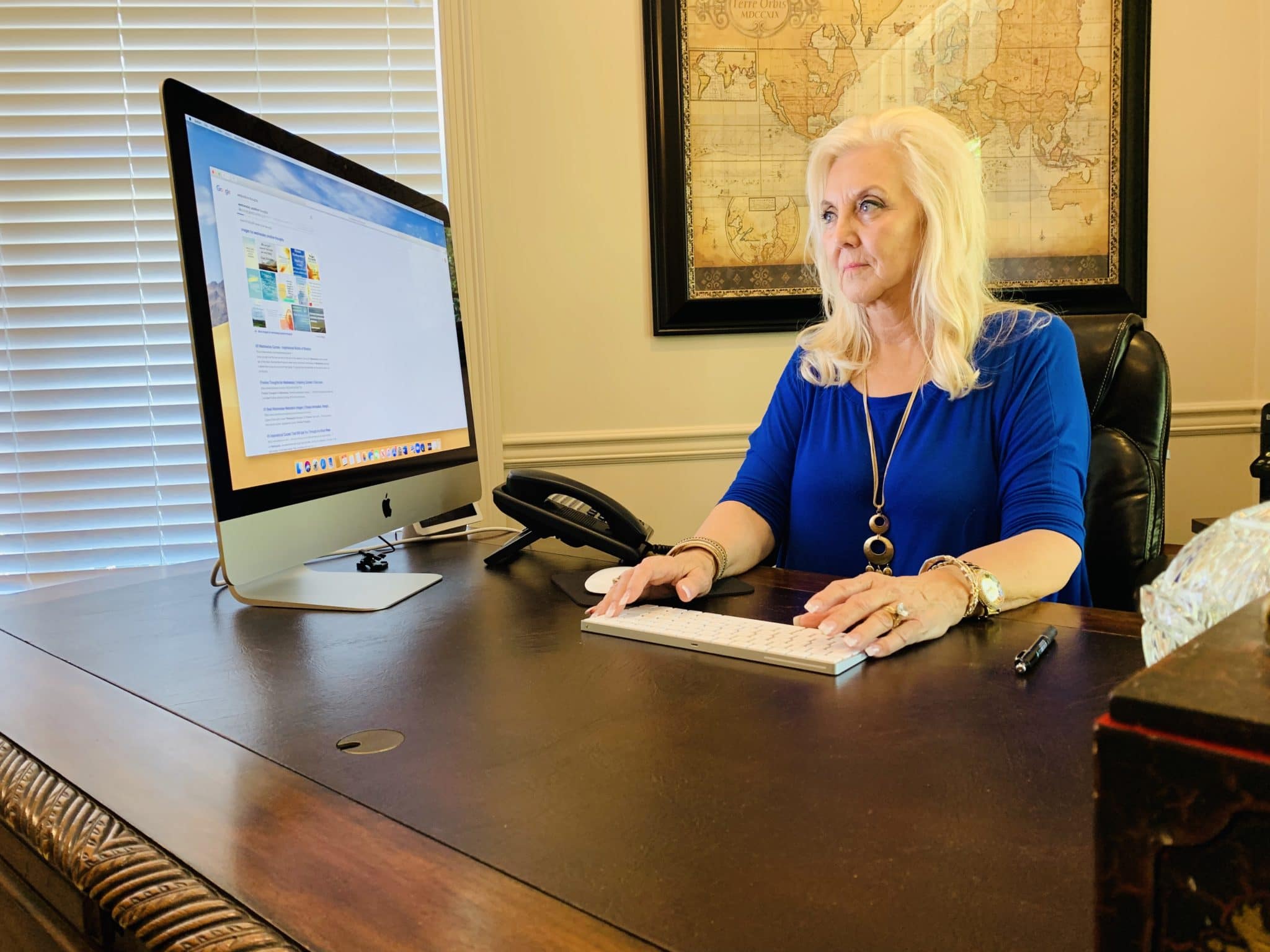Cataract Surgery Restores Vision to Hattiesburg Woman

In 2000 Sherry Pullens, a Hattiesburg real estate broker, underwent Lasik laser eye surgery to correct her nearsightedness. The procedure allowed her to give up glasses.
“Lasik truly changed my life for the better,” says Pullens.
In recent years, though, the sharp focus she enjoyed began to fade and she started using glasses to read or view her computer screen. The problem only grew worse, causing her to change out her reading glasses for stronger ones. This deterioration in her eyesight made it difficult for her to work and function effectively.
A routine eye exam with Dr. David Richardson of Hattiesburg Eye Clinic–who had also performed her Lasik surgery–revealed the cause of her vision problems: cataracts.
A serious eye condition, untreated cataracts can eventually lead to blindness. And it isn’t rare: according to the American Academy of Ophthalmology (AAO), nearly 25 million Americans over the age of forty have some form of cataracts.
That’s why the AAO has designated June as “Cataract Awareness Month.” The observance not only calls attention to the prevalence of cataracts, but also the available treatment options that can effectively restore lost vision.
Cataracts occur when the eyes’ natural lenses become clouded over time. People with cataracts lose clarity and focus, often seeing the world through an increasingly yellowish or brownish haze. While aging is the most prominent factor in cataract development, steroid use, extended sunlight exposure and diseases like diabetes can accelerate it.
“Most people will develop cataracts as they age,” says Dr. Richardson. “But the symptoms vary from person to person.”

Fortunately, cataracts can be treated effectively with surgery to remove the clouded lens and replace it with an artificial implant called an intraocular lens (IOL). An IOL functions just like a natural lens–and sometimes better.
“IOLs have advanced tremendously over the last few years with versions that can correct vision for all distances,” says Dr. Richardson. “It’s now possible with our most advanced lens, the Tecnis Symfony®, for many patients to lose their glasses, including readers, altogether.”
For Pullens, the advanced Symfony® lens, which could also correct her astigmatism, was the best option.
“I’m constantly looking at my phone or on the computer throughout my work day,” says Pullens. “So, the possibility of not having to wear glasses at all was very appealing.”
Pullens underwent CATALYS Laser cataract surgery this past spring in successive procedures about two weeks apart for each eye. Dr. Richardson used the CATALYS® Precision Laser System which is the most advanced cataract surgical system. Designed specifically for cataract surgery, the CATALYS® system automates nearly all of the necessary incisions based on precise measurements of the patient’s eyes. Hattiesburg Eye Clinic was the first in Mississippi to offer the CATALYS and is the only clinic in the state with a fixed site system.
Richardson says, “CATALYS® is an important tool for cataract treatment. The level of accuracy we can attain with it increases the probability that, along with the type of IOL implanted, the patient can be glasses-free after the procedure.”
Within just a few days of her procedures, Pullen was already experiencing a transformation in her vision. Her focus and clarity improved dramatically–and she no longer needed readers.
“The change has been just amazing,” says Pullens. “I’m now able to work on my computer, read my phone and see farther and more clearly when I drive. It’s restored a new level of freedom to my life.”
Pullens is enthusiastic about the cataract treatment offered by Hattiesburg Eye Clinic–and has already recommended it to a number of her friends and clients.
“Lasik made a huge difference in my life twenty years ago. Undergoing cataract surgery has been just as life-changing,” says Pullens. “I would definitely encourage anyone with cataracts to undergo this treatment.”
To learn more about Cataracts, click here!
